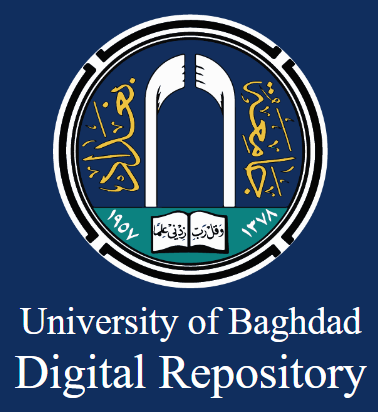The suggestive reference to the iconic form in the interior spaces of mosques
DOI:
https://doi.org/10.35560/jcofarts1456Keywords:
suggestive reference, icon, iconic form, interior spaces, mosquesAbstract
The current research addresses the icon format where it expressed the Muslim designer for his sophisticated mind in expressing the life of contemporary Islamic society, as it was an important and new turn in aesthetics and expression in the architecture of mosques, so it was via internal design For chapel space with various icon designs on this beauty, where the content unit is reflected in its internal spaces and their composition, which has been maintained by maintaining its aesthetic identity. This has emerged in the mosques of Europe, which was characterized by a special icon, with an impact on the Asala Axlie of the Iraqi designer in choosing special icon designs and therefore found the researcher within the first chapter formulated the search problem summarized The following question (Does the IConite form play a role to enhance the internal spaces of contemporary mosques? While the importance of research is concerned with the conservation of how to maintain the originality of the iconic format for internal spaces, but in a modern way to keep pace with enormous interior spaces in domestic spaces Since ancientity, these spaces have been distinguished by an east of the teachings of the religious teachings. There is this clear in the interior design of the role of worship (churches and mosques) so they have been studied and employed in those internal spaces. In light of this The researcher focused the goal of finding the disgusting thought and its effectiveness in choosing the appropriate icon form of contemporary internal spaces of the architecture of mosques. As for the research limits, which represented the thought and its role in the selection of appropriate eastage forms The contemporary internal spaces of Mosque Cambridge Model - United Kingdom Britain, which opened in 2019 and discussed the second chapter of internal spaces, which gained the qualities of the icon of ancient times of mosques and churches where they inspire the designers from Arab and Western architecture are ideas and images of the past of the past to be internal spaces carrying modern status. The researcher has reached the most basic indicators resulting in the theoretical framework, and chapter III has been specialized in determining the subject of research procedures, Dependence on the analytical descriptive approach to analyzing the research Sample Cambridge mosque either chapter IV has included the most prominent results, the strength of the thought of thought of the complaint IConite is an optical act that is designed by the designer of consensus and harmony The aesthetic and building for formal units (linear, seductive and space) which are organized in accordance with the organizational organizational establishment of those units, within the ICOM, as they gave the design treatments for the internal space idea as a production My design is based on the disadvantages of the relationship between the design of the icon and the content of the compatibility of making the formal system and the conclusions they reached through the analysis of the model that iconic spaces are linked only to its history but become iconic When associated with basic values in internal spaces, such as the symptoms, the creativity, creativity and aesthetics. The shape is not meaningful only if we link them in a given sense of the world by realizing those forms that carry in the original. To achieve the goal to detect and effective thought in the selection of the appropriate icon form of contemporary internal spaces of the architecture.
References
Adelin, F. (2012). Research into the Visual Sign for the Meaning of Image. (S. M. Saad, Trans.) Beirut: Arab Organization for Translation.
Al-Ahmar, F. (2010). Dictionary of Semiotics. Beirut: Al-Dar Al-Arabiya Publishers, Al-Kifala Publications.
Al-Alayli, A. (1975). Al-Sahhah in Language and Science. Beirut: Dar Al-Hadara Al-Arabi.
Al-Baalbaki, M. (2008). Al-Mawrid Al-Hadith, English-Arabic Dictionary. بيروت: دار العلم للملاييk.
Al-Ghanimi, S. (1994). The Treasure and Interpretation. Casablanca: Arab Cultural Center.
Al-Muqrim, A.-O. (2017). Factors Influencing Contemporary Mosque Architecture Trends. Baghdad: University of Technology, Architecture Engineering, published research.
Al-Sherbini, L. (2003). (), Dictionary of Psychiatric Terms. Kuwait: Health Sciences Arabization Center, Kuwait Foundation for the Advancement of Sciences.
Al-Sudani, A. (2016). Aesthetic Values and Levels of Creativity in Islamic Art. B.M: Al-Nour Magazine, No. 84.
Ardhiati, Y. (2013). The New Architecture of Mosque Design to Express the Modernity of Moslems. B.M: Global Advanced Research Journal of Arts and Humanities, Vol.2(4).
Betsky, A. (1997). Icons:Magnets of Meaning Hong kong. B.M: san Francisco museum of modern Art.
Eco, U. (2008). The Semiotics of Visual Coordination. (M. A.-T. Al-Ammari, Trans.) Lattakia: Jawar Publishing and Distribution House.
Elam, K. (1992). The Semiotics of Theater and Drama. (R. Karim, Trans.) Beirut: Arab Cultural Center.
Faisal, S. (2006). Lighting Aesthetics. United Arab Emirate: Al-Turath Magazine, Issue 8.
Fayyad, R. (2017). on the globalization of architecture and the image of the city. Beirut: Dar Al-Farabi.
Fischer, E. (1965). The Necessity of Art. (M. Suleiman, Trans.) Beirut: Dar Al-Haqiqa for Printing and Publishing.
Frishman, M. (2002). The Mosque: History, Architectural Development and Regional Diversity. London: Thames and Hudson.
Ghazwan, M. (2016). The Intellectual and Symbolic Connotations of Islamic Art in Contemporary Design. Iraq: Al-Rossum Press, Publishing and Distribution.
ICON, O. (2007). in shorter Oxford English Dictionary. New york: Oxford University Press.
Jenkes, C. (2005). he iconic Building. New york: Rizzoli lnternational publication.
Kyle, P. (1014). the Endlesspier:A study of icon Architecture via theST Petersburg Pier Stpetersburg: University of south Florida. Florida: University of south Florida.
Maalouf, L. (1986). Al-Munajjid in Language and Media. Beirut: Dar Al-Mashreq.
Moon, C. (2011). Sustainable Characteristics of Floating Architecture. B.M: IAPS International Network Symposium.
Omar, A. (2008). Dictionary of the Contemporary Arabic Language. Beirut: World of Books.
Saleh, H. (2019). Iconic Architecture. Baghdad: University of Baghdad, College of Engineering, Department of Architectural Engineering, Master’s Thesis.
Shafi’i, F. (1970). Arab Architecture in Islamic Egypt (The Age of the Governors). Egypt: General Authority for Copyright and Publication.
Downloads
Published
Issue
Section
License
Copyright (c) 2025 Rawaa Mustafa khalaf

This work is licensed under a Creative Commons Attribution 4.0 International License.













